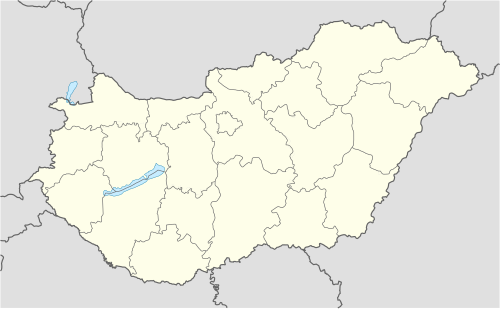Top Qs
Timeline
Chat
Perspective
Solar power in Hungary
From Wikipedia, the free encyclopedia
Remove ads
Solar power in Hungary has been rapidly advancing due to government support and declining system prices. By the end of 2023 Hungary had just over 5.8 GW of photovoltaics capacity, a massive increase from a decade prior.[1] Solar power accounted for 24.8% of the country's electricity generation in 2024, up from less than 0.1% in 2010.[2][3]
In 2023, the country's Minister of Energy, Csaba Lantos, predicted Hungary's target for 6,000 MW of PV capacity by 2030 would likely be exceeded twice over, hitting 12,000 MW instead.[4][5] 2024 statistics confirmed the previous 6,000 MW by 2030 target was exceeded six years early, with PV capacity rising to 7,550 MW and solar power producing a record 24.8% of national electricity generation -- the highest in the EU.[3]
Remove ads
Installed capacity
List of photovoltaic power stations
- Photovoltaic power stations (<10MWp)
Under construction and proposed solar parks
- MOL Solar Parks; Füzesgyarmat, Tiszaújváros and Százhalombatta 18.38 MW (second half of 2019)
- Alteo Solar Parks; Balatonberény and Nagykőrös 7-7 MW (2019 June)
- Photon Energy Solar Pakrs; Fertőd 0.5 MW, Almásfüzitő 5.5 MW and Tiszakécske 5.5 MW (second half of 2019)
- Solar Markt Solar Pakrs; Söjtör 3.1 MW, and Kőszeg 3.9 MW (second half of 2019)
Biggest owners
- More than 5 MWp: Felsőzsolca, Paks, Pécs, Visonta
- Less than 5 MWp:
- MET Power: Százhalombatta
- Solar Markt: Csepreg, Kőszeg, Söjtör, Vép
- ALTEO Group: Balatonberény (7 MWp), Nagykőrös (7 MWp), Monor (4 MWp)
- SolServices Kft: Szolnok ( 138 MWp ) , Szászberek ( 68 MWp ) ,
Remove ads
See also
References
External links
Wikiwand - on
Seamless Wikipedia browsing. On steroids.
Remove ads


